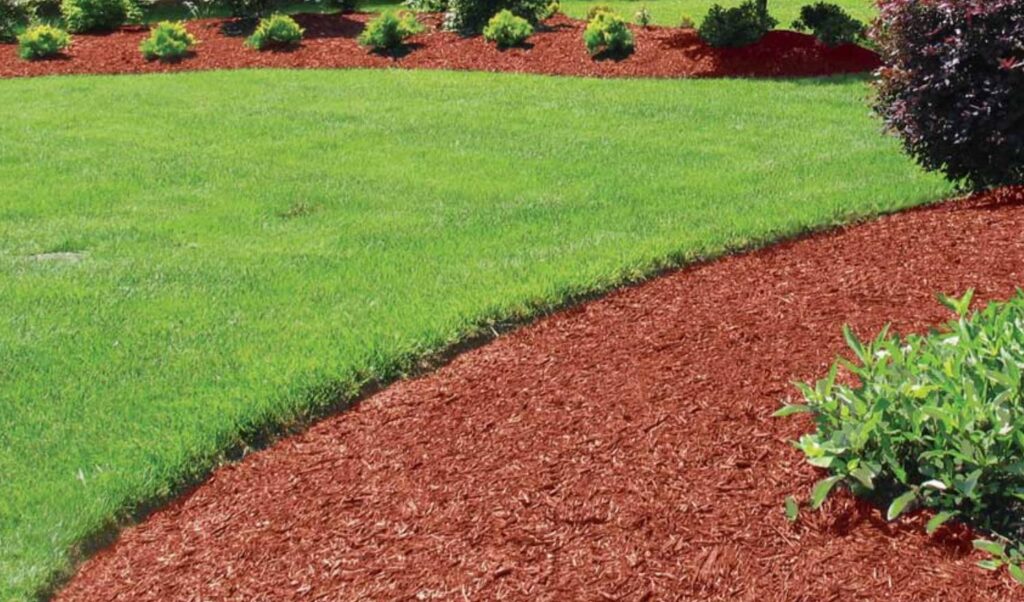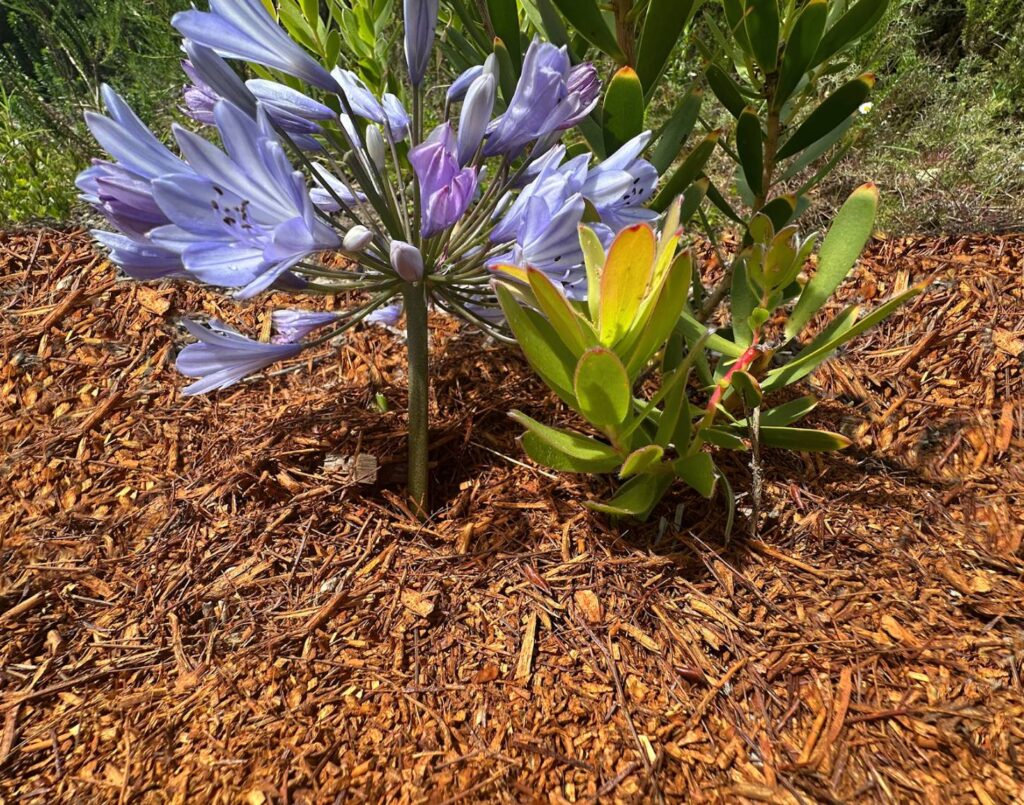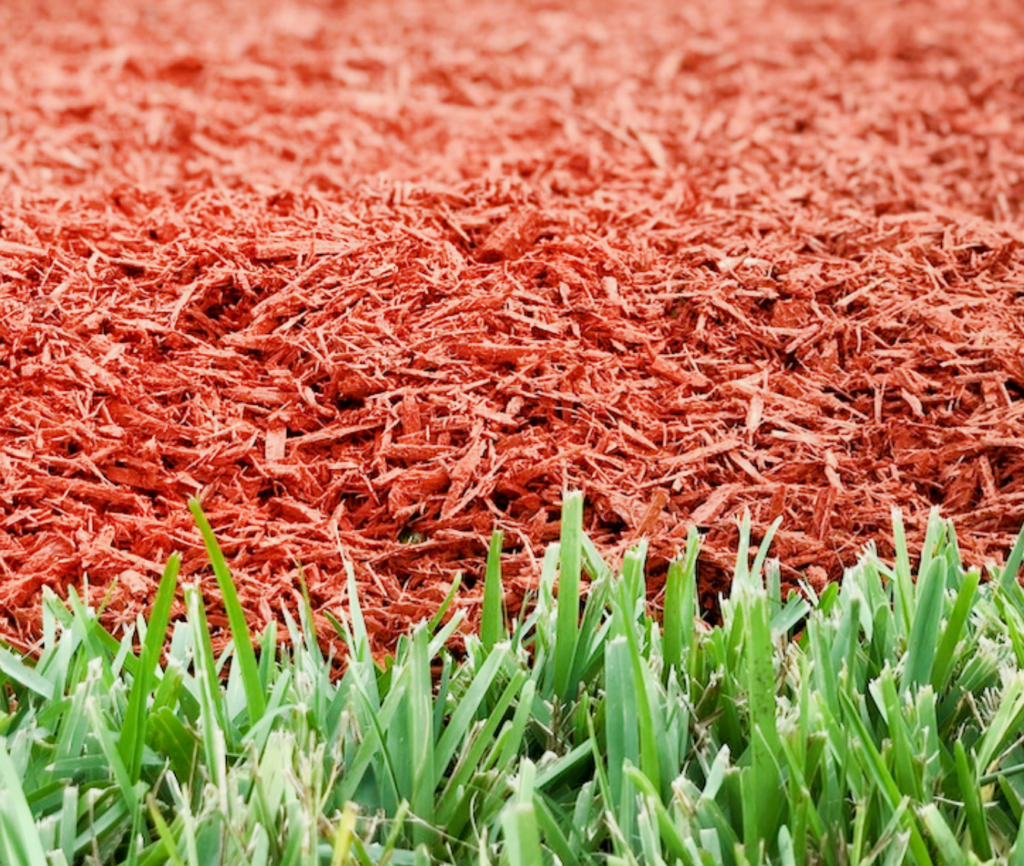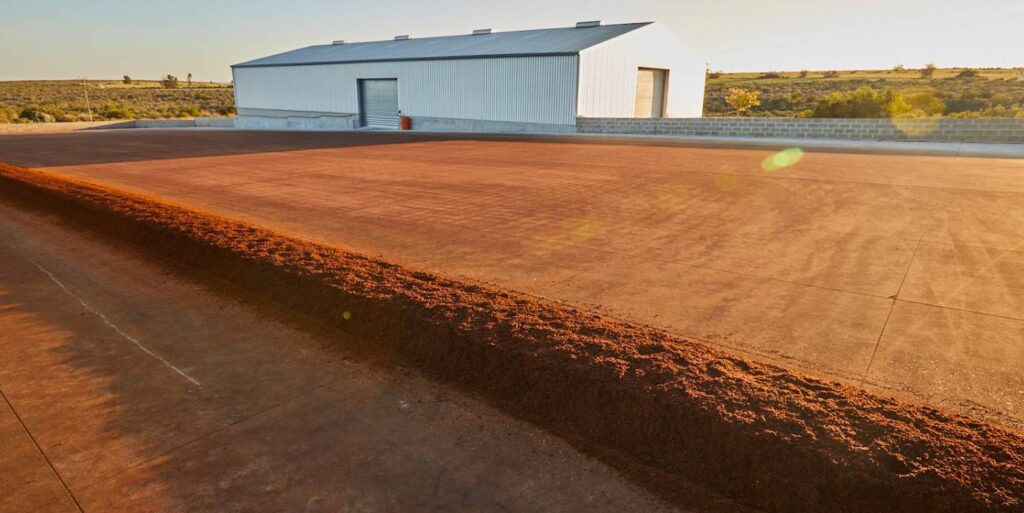With the use of rooibos as a herbal infusion well established in its home range in South Africa, and increasingly across the world as its popularity continues in leaps and bounds, awareness of the health-giving tea has given rise to a variety of other uses for it.
As covered in our articles here on health and wellness, rooibos lends itself to being a versatile ingredient in many products for those who seek a healthier lifestyle supported by sustainable products. Following these trends, a new use for Aspalathus linearis is increasingly being taken up – in gardens, as rooibos mulch.
Long known to organic and permaculture gardeners as an excellent way to improve soil, mulch is now being taken up by growing numbers of homeowners and landscapers as climate change challenges conventional methods of managing green spaces. In this article, we unpack how rooibos makes for an ideal mulch that provides multiple benefits for the environment and plants, whilst also being aesthetically pleasing.
What is rooibos mulch?
After the leaves of the rooibos plant are harvested and processed into tea, the byproduct – consisting of the remaining plant material such as branches, stems, and leaves – can be repurposed into mulch for gardening and landscaping. For the uninitiated, mulch is a layer of organic matter that is applied to the surface of soil with the aim of trapping moisture in order to improve subsoil conditions. Depending on the type and density of the organic matter used, a layer of mulch can be anything between 10cm and 30cm or more.
The aim of the application of mulch is to mimic natural conditions, which would usually see leaf, branch and other decomposing vegetable matter falling from flora and settling on the ground, covering the soil and breaking down over time. In this way, the natural cycle of organic matter settling into soil and breaking down into nutrients for soil organisms is maintained, giving rise to a range of natural processes that support and sustain soil moisture and thus soil and plant health.
In gardens and landscaping, mulch can consist of any of a wide variety of materials from grass clippings to leaves and beyond. A common choice, used frequently by landscapers, is that of pieces of chipped bark or wood chip, which can look good and perform relatively well as a long-lasting organic soil cover.
However, though these common materials are suitable, the size of the individual pieces of chip can be a drawback, as the ideal consistency of a good mulch tends towards density. It is in this area that rooibos mulch excels, as it is made up of a dense mix of fine twigs, branches and leaves that form a barrier on the surface of soil and thus can outperform other kinds of mulch.
And whilst mulch has been a known quantity to canny gardeners the world over for many years, some types are favoured above others for specific properties that accelerate the process of enriching the soil with organic matter as it decomposes, thus improving soil structure, water retention, and nutrient content. As rooibos has made inroads into a variety of industries (primarily but no longer limited to its use as a tea), so this expansion has seen rooibos byproduct become more widely available, and thus accessible in the larger volumes needed for use as a mulch.

Rising To the Challenges of Climate Change
There are a number of practical benefits derived from the use of rooibos mulch, and primary among these is the role it plays in preventing moisture loss from the soil. With climate change seeing higher summer temperatures becoming a significant factor, this aspect of the application of mulch is one which is turning attention toward moisture retention in gardens generally – and for gardeners and homeowners able to source it, toward rooibos mulch in particular.
In South Africa, a country where climate change has seen scorching summer temperatures rise to record levels, the heat can bake soil dry in a matter of hours, making water conservation crucial for maintaining healthy plants and gardens. Thanks to its excellent moisture retention properties, rooibos mulch excels in this area. Being a dense mix of fine twigs and chipped branches, the mulch acts as a protective barrier on top of the soil that reduces evaporation and trapping essential moisture within the soil. This is especially beneficial during the dry heat of South African summers, as it helps keep the root systems of plants hydrated and nourished, even when rainfall is scarce.
Gardeners and landscapers value this moisture-locking ability, as it reduces the need for frequent watering, making it a highly efficient choice for drought-prone areas. This function also makes rooibos mulch an excellent option for indoor plants, which can be the victim of under-watering, or fall prey to fungal diseases if watered too frequently. By adding a layer of rooibos mulch between one and three inches deep, plant roots enjoy a steady level of moisture and in turn, the soil of pots, planters or window boxes is kept healthy.
Added to this key function is one that motivates gardeners the world over to make use of mulch: it acts as a weed-suppressing barrier, by preventing sunlight from reaching the soil. The result is a low-maintenance garden that not only looks good, but also saves on watering. This makes rooibos mulch not just a practical addition to any garden, but also a cost-efficient solution that can lower utility bills and conserve valuable water resources.

Rooibos Mulch – Good for Soil, Great for Plants
While many differing types of organic matter can be used as a mulch, rooibos mulch carries additional benefits that add value beyond simply being able to prevent evaporation of water from the surface of soil, or from deeper layers below.
Anecdotally, rooibos tea-drinking gardeners in South Africa have long reported that putting spent rooibos loose leaf tea, or rooibos teabags, onto their garden soils has resulted in improved plant health and a reduction in the need for watering. These benefits have been observed elsewhere, with tests performed at nurseries seeing the same results on a larger scale – and the science behind it falls into line with the botanical nature of the rooibos plant.
Being a member of the legume family, rooibos produces its own nitrogen through a symbiotic relationship with nitrogen-fixing bacteria in the soil, as covered in our article which looks into the reasons why rooibos is only grown in South Africa. For gardeners this adds extra value: as rooibos mulch breaks down slowly in the presence of moisture, so leachate (which is effectively a weak form of rooibos tea, with additional enzymes and nutrients generated by the breaking down of the rooibos byproduct) seeps into the soil. In turn, soil nutrients are released into the soil which are rapidly taken up by plant roots. This process delivers a range of other benefits that are not immediately visible, but take place below the surface and are a result of soil biology.
Among these is the remediating effect that is kickstarted when a deep layer of mulch is applied to the surface of soil to support plant growth. In effect – and as verified by a study at Stellenbosch University – the breakdown of rooibos byproduct over time causes an increase in soil nutrients, which in turn feed a wide range of soil organisms – including, but not limited to earthworms.
Importantly, the use of rooibos mulch features a release of phosphorus, which, while being vital for the growth of seedlings and the growth tips of plants of all kinds, is particularly good in promoting early root growth, and helping plants form larger root systems. These improved root systems enable plants to reach deeper into the soil for moisture, and nutrients. As this expansion of root structure takes place in combination with sustained levels of moisture, so soil health and biodiversity is increased. Through the application of rooibos as a mulch, the cumulative effect is one which sees soil organisms such as protozoa and bacteria proliferate to a greater degree – and in turn, this activity of microorganisms in the soil biome enables soil to become healthier and more resilient.
By improving soil health and biodiversity in this manner, it is able to recover from extremes of heat and cold, retains moisture to a greater degree over the long-term, and water infiltration is improved as a result of greater the buildup of soil organic matter. This process, which is a consequence of the activity of soil macro-organisms such as earthworms, springtails and a variety of other invertebrates and insects, all lends toward greater above-ground biodiversity: a win-win for garden health, and the health of the web of life they support.
For gardeners and nurseries looking for an ideal ingredient as an additive to soil or to condition compost, rooibos mulch has the ideal properties that make for a winning choice. With a pH that sits within a range of 5 to 5.5, rooibos byproduct mulch supplied directly from a bulk rooibos producer such as Klipopmekaar is slightly acidic, making it ideal for Ericaceous plantings.
However, over time as the rooibos material becomes more humified and is neutralised by microbial decomposition, the pH stabilises to around 5.5 to 6.5, depending on environmental conditions and whether or not it is mixed into the subsoil. In soils with good buffering capacity, the effect on overall soil pH will be minimal, making for a versatile product which adept horticulturalists find useful in a range of applications.

Colour Contrast: Rooibos Red Against Garden Green
Beyond the practical benefits described above, rooibos mulch also stands out for its striking appearance. Its rich red colour – a natural characteristic of the enzymatic oxidation that takes place during the rooibos tea-making process – adds a touch of warmth and vibrancy to any garden or landscape. Whether used in a garden bed, on a pathway, or in a decorative border, the distinctive reddish tones of rooibos mulch create a visually appealing contrast against the green of foliage and flowers.
Landscapers and homeowners love using rooibos mulch not only for its effectiveness but also for the aesthetic appeal it brings to garden spaces. Additionally, and thanks to the enzymes activated during the ‘sweating’ part of rooibos tea processing, rooibos mulch has the extra benefit of suppressing plant pathogens such as Fusarium mould, and also Botrytis.
Rooting for Rooibos: A Mulch Made For Success
Being a sustainable and effective choice for gardeners seeking to enhance soil health, rooibos mulch conserves moisture whilst suppressing weeds. By naturally decomposing without any other additives, it enriches the soil with organic matter, improving fertility and structure over time – and for those with an eye on their carbon footprint, this process comes with the upside that rooibos mulch sequesters carbon as the dense mat of twigs is slowly and naturally absorbed into the soil over time.
Whether you’re cultivating vegetables, flowers, or ornamental plants, rooibos mulch offers a versatile and low-maintenance solution to support healthy growth. By choosing rooibos mulch, you’re not only nurturing your garden but also making an environmentally conscious decision to recycle agricultural byproducts.
Klipopmekaar Rooibos Farm supplies bulk organic rooibos mulch direct to the landscaping, gardening and equestrian trades. Click here for more info.

